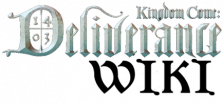In the heat of a medieval battle, where most of the combatants had the same or similar equipment, the pennant or banner was often the only sign differentiating friend from foe. Pennants also helped lift morale and to organize the various units during troop movements. Around 1400, pennants and banners took the shape of extended triangles, upright rectangles and squares. Flags were fashioned from coloured canvas or silk and the depictions or emblems were painted onto them, most often the coats of arms of the respective feudal lords.
Cavalry carried small pennants on their spears and craftsmen who were members of the guilds also had their own banners. The guild banner was emblematic of the profession and was shown at public ceremonies and at military and other ostentatious events.
The banner of the Czech lands dates back to the 13th century and depicts ‘gules, a lion rampant queue forchée argent’ i.e. a two-tailed silver lion raised on its hind legs, on a red background.
In the heat of a medieval battle, where most of the combatants had the same or similar equipment, the pennant or banner was often the only sign differentiating friend from foe. Pennants also helped lift morale and to organize the various units during troop movements. Around 1400, pennants and banners took the shape of extended triangles, upright rectangles and squares. Flags were fashioned from coloured canvas or silk and the depictions or emblems were painted onto them, most often the coats of arms of the respective feudal lords.
Cavalry carried small pennants on their spears and craftsmen who were members of the guilds also had their own banners. The guild banner was emblematic of the profession and was shown at public ceremonies and at military and other ostentatious events.
The banner of the Czech lands dates back to the 13th century and depicts ‘gules, a lion rampant queue forchée argent’ i.e. a two-tailed silver lion raised on its hind legs, on a red background.
